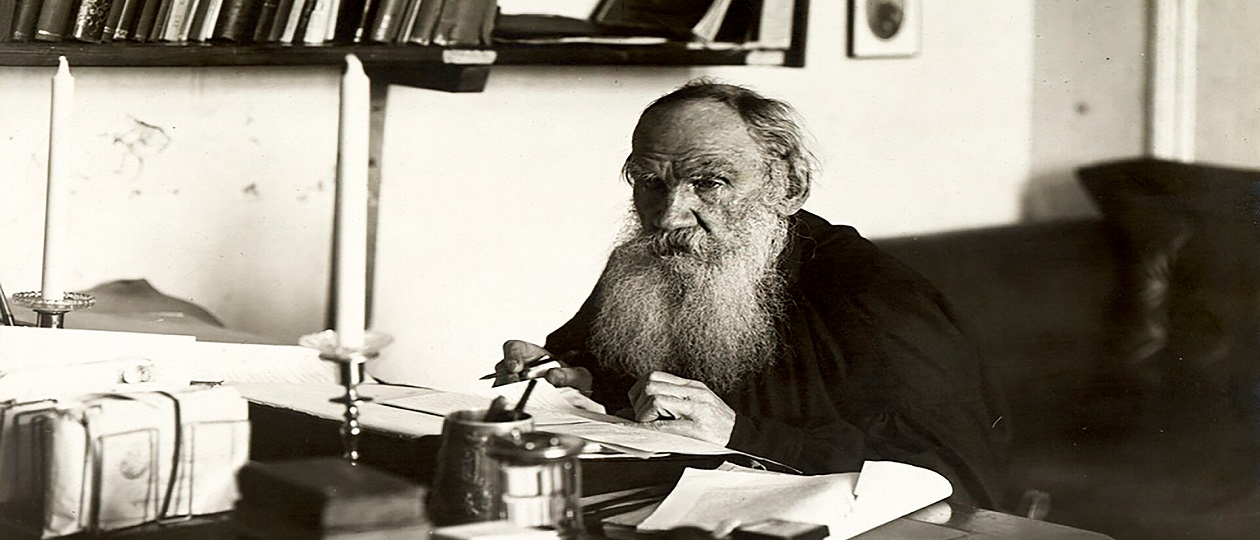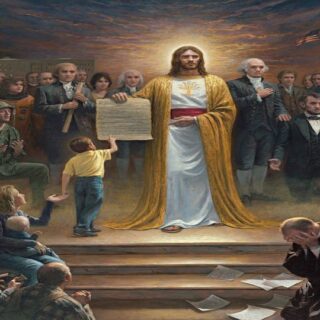
The year 1908 was somewhat pivotal for Leo Tolstoy, the world’s greatest writer. In that year, Tolstoy wrote «I Cannot Be Silent» in which he condemned the government for using violence against revolutionaries and ordinary people during the Revolution of 1905-1907.
As Tolstoy wrote:
“You say the atrocities committed by the revolutionaries are terrible. I do not dispute it. I will add that besides being terrible they are stupid and that, like your own actions, they fall short of their target. Yet however terrible and stupid their actions may be — all those bombs and violence, those revolting murders and thefts of money — still all these deeds do not come anywhere near the criminality and stupidity of the deeds you commit.” [1]
As noted in the previous article, Tolstoy’s exoneration of terrorists in 1908 was the logical result of years of his work in delegitimizing the Russian government and social institutions. Tolstoy’s novel Resurrection, published in 1899, was a colossal attack upon the government, bureaucracy, Russian Orthodox Church, the armed forces, the propertied classes, public morality, the family, and marriage.
Tolstoy proclaimed that common criminals and revolutionaries were not at fault because they were the products and victims of an evil society. In fact, as the novel emphasized, revolutionaries and other outlaws had a higher morality than their persecutors.
Bolshevik leader Vladimir Lenin called Tolstoy “the mirror of the Russian revolution” because he incarnated the contradictory and unstable nature of the peasant masses during the Revolution of 1905-1907. As Lenin wrote in 1908:
“On the one hand, merciless criticism of capitalist exploitation, exposure of government outrages, the farcical courts and the state administration, and unmasking of the profound contradictions between the growth of wealth and achievements of civilization and the growth of poverty, degradation and misery among the working masses. On the other, the crackpot preaching of submission, “resist not evil” with violence.
On the one hand, the most sober realism, the tearing away of all and sundry masks; on the other, the preaching of one of the most odious things on earth, namely, religion, the striving to replace officially appointed priests by priests who will serve from moral conviction, i. e., to cultivate the most refined and, therefore, particularly disgusting clericalism.”.[2]
It would be more accurate to describe Tolstoy as the mirror of the culture of violence that made mass terrorism possible in Russia. Terrorism in Russia between 1860 and 1900 took the lives of about 100 people. This suggests that the level of terrorism in Russia was like European countries. However, the total of 17,000 people killed or wounded set a European-wide record for terrorism. [3, pр. 3, 21]
As noted earlier, terrorism in the Revolution of 1905-1907 was one type of violence. The other types included the violence of mass protest movements, the violence of government repressions, and common criminal violence.
The waves of mass and individualized violence in the Russian Empire were expressed not just through acts of physical violence, but also through an entire culture of violence — in spoken and written forms expressed through slogans, conversations, lectures, sermons, speeches, songs, poems, jokes, novels, short stories, stage plays, operas, newspaper and magazine articles, leaflets, nonverbal expressions, physical gestures, behavior, lifestyles, etc. The Russian Empire became a land where thousands of people killed for political reasons; hundreds of thousands if not millions more supported political killing; tens of millions more embraced the culture of violence or, at least, witnessed its many variations.
The practitioners, admirers, opponents, and witnesses of the culture of violence included: members of the Imperial family, nobles, industrialists, merchants, members of the business community, urban and rural professional people, artisans, industrial workers, office workers, service workers, domestic workers, peasants, seasonal workers, Cossacks, nomads, men, women, the elderly, the middle-aged, young adults, teenagers, children, students, intellectuals, members of artistic professions, bureaucrats, officers, soldiers, sailors, Russians, members of the ethnic minorities, clergy and laypeople from all faiths, atheists, reactionaries, conservatives, liberals, socialists, anarchists, Russian and non-Russian nationalists, internationalists, feminists, people of unaffiliated political tendencies, immigrants and refugees, foreign residents, criminals, voluntary and involuntary dropouts from all classes of the population.
The practice and culture of violence shook the communities of political émigrés and students living abroad along with the millions of emigrants from the Russian Empire living in Europe, North and South America, Africa, Asia, and Oceania. The violence in Russia made the news in Europe and North America. Russian terrorists became familiar figures in European and North American literature. Many socialists and liberals in Europe and North America supported Russian terrorists because they regarded them as freedom fighters against a tyrannical government. Revolutionaries in India, China, and Japan admired what they called the “Russian method” — terrorism.
Tolstoy very much reflected this massive culture of violence, and he made his contributions to it through his writing.
Sources Used
- Толстой, Л.Н. (1908) Не могу молчать. (I cannot be silent). http://tolstoy.ru/creativity/publicism/795/. I am using an English translation that I found years ago. However, the link to this translation is no longer secure.
- Lenin, V. I. (1908) Leo Tolstoy as the mirror of the Russian Revolution. https://www.marxists.org/archive/lenin/works/1908/sep/11.html.
- Geifman, Anna. (1993) Thou shalt kill: revolutionary terrorism in Russia, 1894-1917. Princeton NJ: Princeton University Press, 1993. Русский перевод в электронной форме. Гейфман, Анна. Революционный террор в России, 1894-1917. Москва: КРОН-ПРЕСС, 1997.





